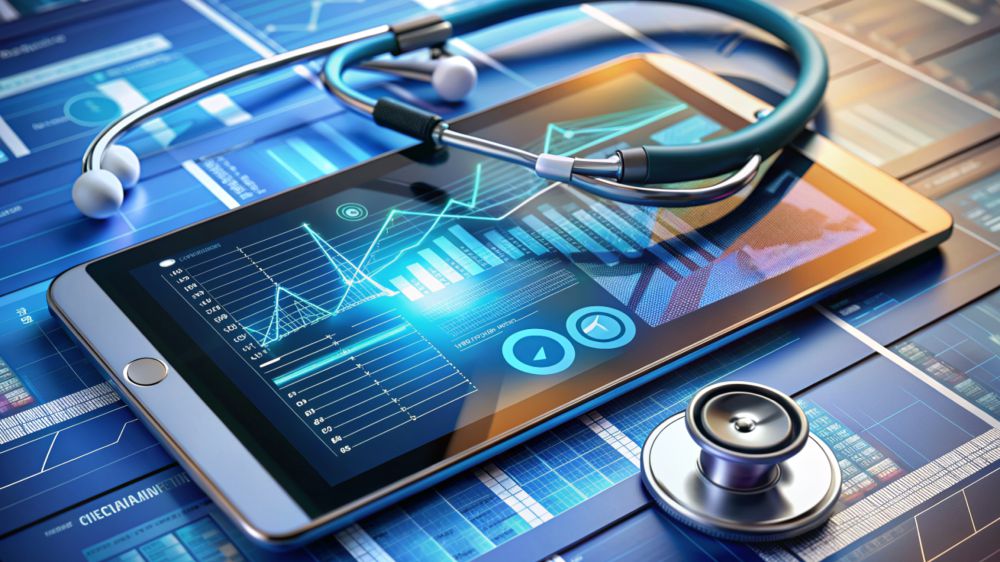The US healthcare workforce crisis has significantly contributed to the rising need for digital care, including telemedicine and healthcare software apps. The demand for healthcare applications has surged sharply in the past few years, with an average of almost one million downloads daily in 2025.
The increased popularity of healthcare applications in the complex technology landscape raises concerns about reliability and safety, which underscores the significance of testing. Implementing a comprehensive testing strategy is the vital last step in building a seamless product, helping healthcare software providers boost credibility and deliver a good user experience.
Scope of Healthcare Application Testing

What is Healthcare Application Testing?
Healthcare application testing evaluates programs, systems, or frameworks in healthcare environments for performance, functionality, and safety. The emphasis on healthcare application testing stems from the need to ensure the efficiency of these digital health tools.
Scope of healthcare application testing
Medical applications operate on sensitive patient information and necessitate interaction with other systems. Therefore, they require rigorous testing to avoid breaches, ensure compliance with standards, and guarantee seamless interoperability in healthcare with different software and hardware.
Healthcare application testing reviews application functionality, security, interoperability, performance, regulatory compliance, and cross-dependency with other entities.

Why Is Healthcare Application Testing Important?
The healthcare industry is evolving rapidly and facing severe competition in service delivery. Applications facilitate healthcare providers’ efforts to streamline patient care and hospital operations by automating workflows to achieve higher quality and productivity.

Ensuring medical applications function as planned and are safe for patients and medical staff is crucial. Any flaws can cause a breakdown in care delivery, significantly impact patients’ health, and interrupt operations. Validation through thorough testing is essential for risk reduction and system reliability
- Ensure patient safety
- Enhance data security
- Comply with regulatory standard
- Reduce system failures
1. Ensure patient safety
Healthcare applications intended for critical purposes like diagnosis, treatment, and monitoring must undergo thorough testing to prevent errors that could compromise patient safety. Identifying and resolving early issues is crucial to ensure the software operates correctly and accurately. Improving the quality of care without affecting patient health is a core goal.
2. Enhance data security
The healthcare system holds extremely sensitive PHI that must be encrypted and securely stored. Data breaches could result in significant losses for hospitals and software providers, such as identity theft or unauthorized entry to private medical data.
Testing ensures that confidentiality and data integrity in healthcare are preserved during transmission and storage. Safeguarding patient information from cyber hazards and unauthorized entry starts with recognizing and rectifying security weaknesses and adding additional layers of security.
3. Comply with Regulatory standards (HIPAA, GDPR, etc.)
Healthcare applications must adhere to rules and norms like HIPAA, GDPR, ISO, and NIST. These standards establish strict rules to protect patient health data, uphold privacy, and enforce security measures. Failure to conform with HIPAA standards poses a significant risk for medical application permission and other legal consequences, financial fines, and damage to reputation.
Comprehensive testing is essential to meeting HIPAA standards, reducing risks, pinpointing security weaknesses, and protecting the confidentiality and integrity of patient information in healthcare applications.
4. Reduce system failures
The healthcare app must remain operational at all times and avoid potential downtime. It’s crucial to conduct performance tests in various scenarios. While standard and peak loads are typical for performance testing, the healthcare system requires thorough examination under conditions like power outages, low network connectivity, offline usage, peak loads, unexpected surges, and other abnormal situations. The principle of “Test Fast, Fail Fast, Adjust Fast” will reduce the chance of system breakdown.
Testing of popular healthcare applications
Every healthcare application is subject to testing no less than once in its development process without exception. Testing is especially important for these four products:
- Electronic health records (EHR)
- Telemedicine platforms
- Health management apps
- Medical device software

1. Electronic Health Records (EHR)
Testing for interoperability in EHR systems is crucial to ensure seamless collaboration among various healthcare information systems. This facilitates the smooth exchange of patient data, minimizes mistakes, and enhances patient results. EHR testing involves data integrity, system functionality, and interoperability with other healthcare systems.
2. Telemedicine platforms
Testing a telemedicine platform involves validating that all features and functionalities work according to standards. Some examples are health card numbers and MINC verification, geolocation, video calling technical standards, billing, e-prescription, and clinical data access via EHR.
3. Health management apps
Testing health management apps involves interoperability, compliance, regulations, security, and safety tests to enhance reliability and safeguard patient data and health information while integrating them into a unified web app. That ensures modifications made in one component or layer wouldn’t impact the others.
4. Medical device software
Testing medical device software is to assess the functionality and interconnection of medical device databases. Quality assurance professionals evaluate the utilization of this database during the software testing process for medical devices to prevent any data loss from medical equipment.
What Are the 8 Key Components of Healthcare Application Testing?
The testing process varies among different applications but generally includes these eight components:
- Functional testing
- Performance testing
- Data security and compliance testing
- Usability testing
- UI/UX testing (ease of use)
- Medical device testing
- Interoperability testing
- Localization testing’

1. Functional testing
For functional testing, teams assess the fundamental software functions against the predetermined criteria from the planning phase of development. This phase is usually the initial testing phase, confirming that all essential functions are operating as intended before progressing to examine more particular scenarios.
Evaluating a healthcare app’s functionality includes assessing the precision and logical coherence of data, the logic and sequence of operations, and the incorporation and compatibility of the elements. Testing every function in an application ensures that it works in accordance with the specific requirements and produces expected outcomes.
2. Performance testing
Performance testing evaluates the software’s stability under normal traffic conditions. Testers also assess its high-traffic performance to confirm that the healthcare system functions effectively under pressure.
Assessing a healthcare app’s performance involves checking system speed, scalability, availability, and responsiveness under load. Evaluating transaction response time, throughput, infrastructure resource utilization, and efficiency rounds out the performance testing process.
3. Data security and compliance testing
Security testing is standard procedure for all typical software development projects. Healthcare software must also undergo compliance testing. Testing healthcare applications in terms of security encompasses encrypting data, authenticating users, authorizing access, and detecting and preventing threats and vulnerabilities.
Healthcare organizations must adhere to security protocols and laws, such as HIPAA and GDPR, depending on the area. Compliance evaluation of medical applications includes following regulations and standards, aligning with best practices and guidelines, and meeting contractual and legal obligations.
4. Usability testing
Usability testing examines the software by simulating the user’s anticipated experience to confirm that the healthcare software is user-friendly and adheres to logical workflows. First, testing during the design phase identifies unclear steps in the interface prototype, and then follow-up testing takes place after developing the product’s beta version.
Healthcare application testing for usability is relevant to interface ease, learnability, satisfaction, and device accessibility. Testers typically collaborate with a focus group to obtain real-life feedback using the final product version.
Testers will run usability tests for all user roles, including patients, medical professionals, and administrators, ensuring no service gaps and a seamless user experience.
5. UI/UX testing (ease of use)
Healthcare UI/UX testing helps identify potential obstacles users may face when using your app. This testing type includes two periods: static healthcare application testing and a dynamic software testing review phase.
In the first phase, QA specialists check whether the app design aligns with user needs and business logic. It includes a broad assessment of a static app design using Figma or a comparable platform.
In the second phase, testers will observe how your app design handles different requests and functions under changing conditions.
6. Medical device testing
An application may struggle to link with a device or a wearable technology device may be connected but unable to transmit data. Medical device testing predicts and averts such situations, guaranteeing prompt identification and resolution of problems.
The testing phase for medical devices assesses the functionality and connectivity of the medical device databases. Quality assurance experts evaluate the integration of these databases to prevent any loss of medical device data.
7. Interoperability testing
Test engineers confirm whether a healthcare system can effectively exchange medical information following key data transfer protocols like HL7, FHIR, and DICOM. Quality assurance experts employ manual requests to assess the data exchange instances of your software and evaluate them for adherence to the FHIR standard.
Furthermore, testers utilize diverse testing scenarios to inspect an application’s interaction with third-party services. Ensuring that a healthcare application aligns with the necessary and commonly used healthcare systems and devices is essential.
8. Localization testing
Localization testing is crucial for solutions targeting a global audience. Given the significant differences in healthcare regulations worldwide, it’s important to consider variations in the local version of the application. Be sure to include elements like language support, region-specific integrations, and marketing approaches.
Localization testing helps ensure an app fits the language and culture of specific nations. This testing reviews UI, currency, and date and time formats and focuses on content translation to prevent any uncertainties.
What Are 4 Key Challenges in Healthcare App Testing?
Given the versatility of healthcare application testing types, it is crucial to acknowledge different challenges potentially arising throughout this development stage:
- Security and data privacy
- Complexity of healthcare applications testing
- Clinical accuracy
- User-friendliness

1. Security and data privacy
Healthcare applications use patient-sensitive information, such as personal medical and financial records, which underscores the importance of security. Quality assurance teams must prevent data exposure or compromise during testing, necessitating a comprehensive grasp of the system, regulatory standards, and potential weaknesses.
Healthcare applications must integrate with other systems, such as medical devices and hospital management systems, which can incur new security vulnerabilities. QA engineers must apply additional security testing to the whole system.
2. Complexity of healthcare applications testing
A healthcare application has numerous functions which can pose challenges in analyzing security weaknesses.
Testing medical applications as software devices is more intricate than testing other software categories due to the emphasis on interoperability, compliance requirements, data precision worries, etc.
3. Clinical accuracy
The reliability of medical applications is a matter of doubt for both patients and healthcare providers. Recent studies revealed that symptom-assessment apps can provide safety guidance akin to general practitioners, indicating prospects for technological enhancements. Additional measures are required to guarantee the accuracy of advice by healthcare apps.
4. User-friendliness
Due to the diverse user base, including non-tech-savvy patients, the testing team must approach the product from various angles to make medical applications inclusive, enabling users of all abilities to utilize it effectively. Testing for user-friendliness also ensures that people with different disabilities, such as visual, auditory, or motor impairments, can use it.
Each user group may have unique needs, leading to situations that were not anticipated during the application’s design. Thorough accessibility, usability, and inclusion testing guarantees the software’s features work for everyone.
What Affects the Cost of Healthcare Application Testing?
From the business perspective, healthcare application testing cost is an open question subject to various factors:
- Application complexity
- Team size & specific roles
- Regulatory updates interoperability
- Testing tools implementation
- Outsourcing and insourcing balance

1. Application complexity
The cost of testing a healthcare application is affected significantly by its complexity. More intricate features like EHR system integration, real-time data monitoring, appointment scheduling, prescription reminders, and telemedicine capabilities can dramatically increase testing time and expenses.
The expenses for testing healthcare applications with advanced features are elevated because of demands for platform support, data security measures, adherence to regulatory standards, and integration necessities with existing healthcare systems.
2. Team size & specific roles
Building a healthcare application requires more than developers. The project team will consist of many roles. Project Managers, Business Analysts, UI/UX Designers, QA Engineers, etc., which augment team size and cost.
The testing cost of a healthcare app ultimately depends on the experience of the people filling those roles, plus the developers’ experience level. Having a skilled and diversified team of junior and senior developers is crucial, but it can make testing costs more difficult to estimate.
3. Regulatory updates interoperability
Due to the intricate nature of healthcare data and sensitive patient information, the testing process is lengthy and costly. As mentioned, healthcare app developers must follow HIPAA and GDPR rules, necessitating robust security measures and frequent audits, often requiring legal support.
4. Testing tools implementation
Testing expenses cover various costs related to multiple testing methodologies, assistive technologies, and specialized tools. Once lacking access to testing tools or a separate testing environment, testing teams must hire them at a high rate.
Testing procedures, including functional testing, performance testing, data security testing, etc, also require different testing tools, contributing to the overall testing expenses.
5. Outsourcing and insourcing balance
Employing an in-house development team involves start-up costs such as salaries, perks, and workspace. Outsourcing healthcare application testing could lower costs while ensuring a top-notch product from the vendor. When using an external healthcare software developer, the payment structure is hourly-based, with rates varying by outsourcing location.
KMS Healthcare: Leading in Consulting and Staffing Service
Facilitated by a diverse array of testing tools and exclusive testing centers, our platform-certified QA specialists boast extensive expertise in examining healthcare software solutions. We reduce the burden on your team and ensure your product meets your exacting demands.
Evaluating healthcare application testing requires specialized expertise and deep comprehension of emerging trends within the healthcare sector. Collaborating with experienced healthcare technological providers can reduce the challenges of adopting top-notch quality assurance methods.
KMS Healthcare offers expert guidance on testing strategies to build a comprehensive product development roadmap. In addition to testing, our team can evaluate business readiness and market potential to ensure a successful product launch.
